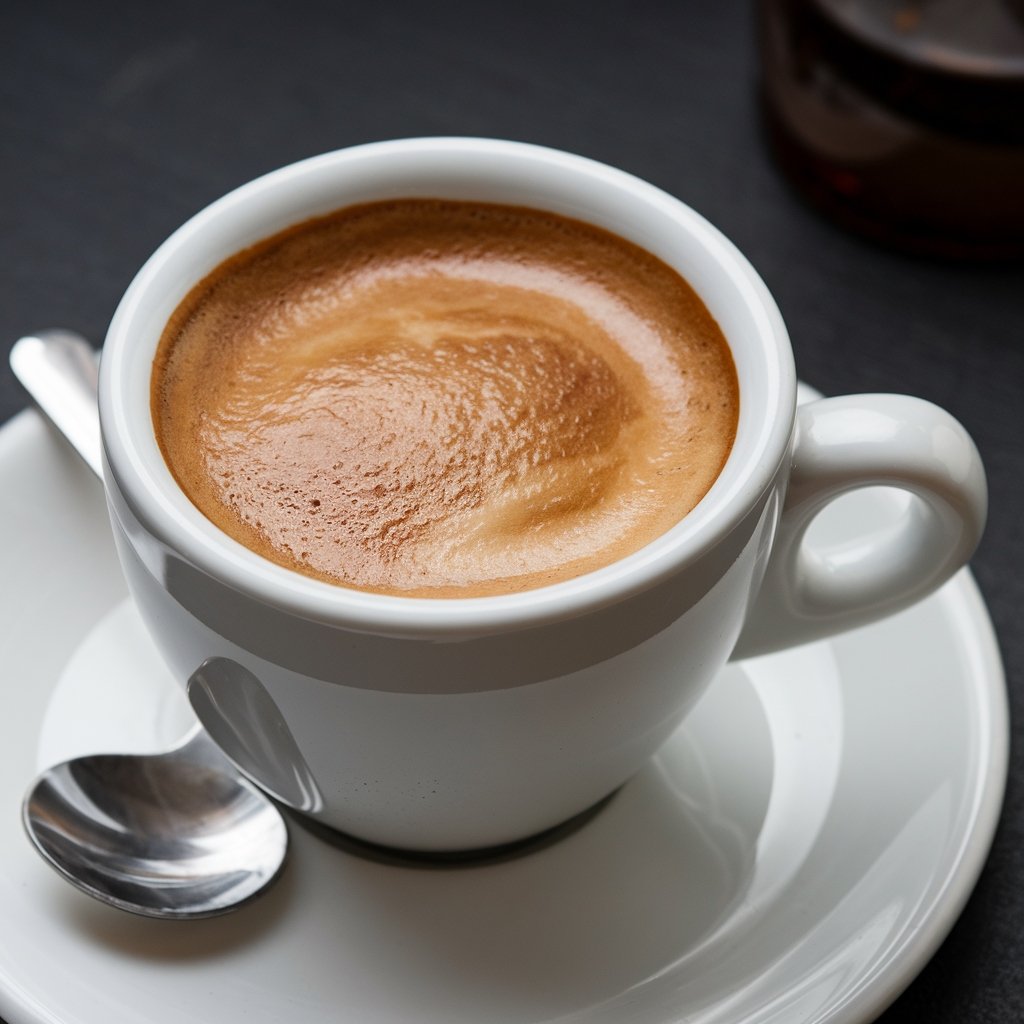Espresso coffee is more than just a drink; it’s an experience, a ritual, and for many, the fuel that powers their day. This bold and flavorful beverage has become a cornerstone of coffee culture worldwide, beloved by connoisseurs and casual drinkers alike. From its rich crema to its intense aroma, espresso is a sensory delight that continues to captivate hearts (and palates) everywhere.
But what is espresso exactly? How does it differ from your average cup of joe? And, most importantly, how can you enjoy it to its fullest potential? Whether you’re new to the espresso world or a seasoned enthusiast, this comprehensive guide will help you explore everything you need to know—from brewing techniques and popular drinks like the espresso martini to understanding how much caffeine is in a shot of espresso.
What Is Espresso?

Espresso is a concentrated coffee beverage made by forcing hot water through finely ground coffee beans under high pressure. The result is a small, intensely flavored shot of coffee with a rich, velvety layer of crema on top. Unlike drip coffee, which is brewed by slowly percolating water through coffee grounds, espresso is all about precision, speed, and depth of flavor.
This iconic drink originated in Italy in the early 20th century and quickly gained global popularity. Espresso isn’t just a drink; it’s a foundation for many beloved coffee beverages, including lattes, cappuccinos, and macchiatos. Its versatility and robust flavor profile make it a staple in coffee shops and kitchens worldwide.
The Art of Brewing: How to Make the Perfect Espresso
If you’ve ever wondered how baristas achieve that perfect shot of espresso, here’s a breakdown of the key elements:
1. The Right Espresso Machine
Investing in a high-quality espresso machine is crucial for brewing excellent espresso. Look for features like adjustable pressure settings, a built-in grinder, and a steam wand for milk frothing. Popular brands like Breville, De’Longhi, and Gaggia offer excellent options for home brewing.
2. Freshly Ground Coffee Beans
Freshness is key. Opt for whole coffee beans and grind them just before brewing to preserve their flavor. Aim for a fine, consistent grind, as this is essential for proper extraction.
3. The Golden Ratio
A typical espresso shot requires about 7-9 grams of coffee grounds for a single shot or 14-18 grams for a double shot. The water-to-coffee ratio should be approximately 1:2, meaning if you use 18 grams of coffee, your final shot should weigh around 36 grams.
4. Mastering the Tamp
Tamping (pressing the coffee grounds evenly into the portafilter) ensures uniform extraction. Apply firm, even pressure to create a compact coffee puck.
5. The Perfect Shot
Once you’ve prepared your espresso machine and tamped your grounds, start the brewing process. A well-pulled shot should take around 25-30 seconds and yield a rich, amber-colored liquid with a thick layer of crema.
How Much Caffeine Is in a Shot of Espresso?
Espresso is often seen as the ultimate caffeine kick, but just how much caffeine does it contain?
On average, a single shot of espresso contains about 63 milligrams of caffeine, while a double shot (doppio) packs around 126 milligrams. Interestingly, while espresso has a higher caffeine concentration per ounce than regular coffee, a standard 8-ounce cup of drip coffee often contains more total caffeine due to its larger serving size.
This makes espresso an excellent choice for those who want a quick burst of energy without committing to a full mug of coffee.
Popular Espresso-Based Drinks to Try
Espresso’s versatility allows it to shine in a variety of coffee drinks. Here are some of the most popular options:
- Espresso Macchiato: A single or double shot of espresso “stained” with a dollop of frothy milk.
- Cappuccino: Equal parts espresso, steamed milk, and milk foam, creating a creamy and balanced drink.
- Latte: A smooth blend of one shot of espresso and steamed milk, topped with a thin layer of foam.
- Americano: Espresso diluted with hot water for a milder flavor.
- Espresso Martini: A cocktail combining espresso, vodka, and coffee liqueur, perfect for after-dinner indulgence.
If you’re curious to explore more coffee varieties and expand your coffee knowledge, check out this guide on the types of coffee for inspiration!
The Flavor Profile of Espresso Coffee
One of the reasons espresso stands out is its complex flavor profile. Depending on the coffee beans and brewing technique, you can experience notes ranging from chocolate and caramel to citrus and berries.
Espresso is typically more concentrated and robust than other coffee types, with a balance of bitterness, sweetness, and acidity. The crema adds a velvety texture and enhances the drink’s overall richness.
Common Mistakes to Avoid When Brewing Espresso
Even the best espresso machine can’t save you from certain pitfalls. Here are some mistakes to avoid:
- Using Stale Coffee Beans: Fresh beans make a world of difference in flavor.
- Incorrect Grind Size: Too coarse or too fine, and your espresso will be over-extracted (bitter) or under-extracted (sour).
- Inconsistent Tamping: Uneven pressure can result in poor extraction.
- Overlooking Cleaning: A dirty machine can compromise your espresso’s taste and quality.
Tips for Enhancing Your Espresso Experience
- Experiment with Coffee Beans: Try single-origin beans to explore unique flavor profiles or blends for a balanced taste.
- Invest in a Burr Grinder: Burr grinders produce a consistent grind size, essential for great espresso.
- Warm Your Cups: Pre-warming your espresso cups keeps your drink at the perfect temperature.
- Pair with Snacks: Espresso pairs beautifully with dark chocolate, almond biscotti, or even a slice of citrus cake.
Espresso Coffee Around the World
Espresso culture varies across countries, each adding its twist to the classic drink:
- Italy: The birthplace of espresso, where coffee bars serve quick, no-frills shots.
- Australia: Known for its flat whites, a creamy variation of the latte.
- Scandinavia: Espresso is often brewed extra strong to combat cold climates.
- United States: Home to the espresso martini and many creative, indulgent espresso-based drinks.
- Cuba: Known for Cuban coffee, which combines espresso with sugar during the brewing process to create a uniquely sweet and intense flavor. Learn more about this fascinating variation and its cultural significance in this guide to Cuban coffee.
Dive into the World of Espresso Coffee
Espresso coffee is more than just a drink—it’s a lifestyle, a craft, and a source of endless enjoyment. Whether you savor it straight or as part of a creamy latte or indulgent espresso martini, this versatile beverage offers something for everyone.
So, grab your favorite espresso machine, experiment with beans and techniques, and take your coffee game to the next level. Share this guide with fellow coffee enthusiasts and let them join the espresso revolution!

Espresso Coffee Recipe
Equipment
- Espresso machine (or a Moka pot/Aeropress for alternatives)
- Burr grinder (for freshly grinding coffee beans)
- Tamper (for compressing the coffee grounds)
- Portafilter (for holding the coffee grounds)
- Espresso cup (pre-warmed)
- Digital scale (optional, for precise measurements)
Ingredients
- 8-10 grams Freshly roasted coffee beans Use high-quality beans for the best flavor.
- 30-35 milliliters Filtered water Ensures clean, balanced extraction.
Instructions
Step 1: Prepare Your Equipment
- Preheat your espresso machine and espresso cup to ensure the coffee stays hot during brewing.
- If using a Moka pot or Aeropress, assemble and preheat them according to their respective instructions.
Step 2: Grind Your Coffee Beans
- Use a burr grinder to grind 8-10 grams of coffee beans to a fine consistency, similar to table salt. A precise grind size is crucial for even extraction.
Step 3: Load and Tamp the Portafilter
- Add the ground coffee into the portafilter, leveling it off with your finger.
- Use a tamper to compress the coffee grounds evenly. Apply firm, consistent pressure until you feel resistance. This creates a compact "puck" for proper extraction.
Step 4: Start the Brew
- Insert the portafilter into the espresso machine’s group head and start the brewing process.
- Aim for a brew time of 25-30 seconds to extract 30-35 milliliters of espresso. Watch for the rich, golden crema to form on top.
Step 5: Serve and Enjoy
- Pour the espresso into your pre-warmed cup.
- Savor the espresso straight or use it as a base for other drinks like cappuccinos, lattes, or an Americano.
Notes
- Bean Selection: Single-origin beans tend to have unique flavor profiles, while blends offer a more balanced taste. Experiment to find your favorite!
- Water Temperature: The ideal water temperature for espresso extraction is around 195–205°F (90–96°C). Most espresso machines handle this automatically, but it’s worth checking.
- Crema: A good shot of espresso will have a thick, golden crema on top. If your espresso lacks crema, check the freshness of your beans or the grind size.
- Alternatives to an Espresso Machine: If you don’t have an espresso machine, use a Moka pot or an Aeropress with the espresso brewing method. While it won’t produce true espresso with crema, it will still yield a strong and concentrated coffee.
